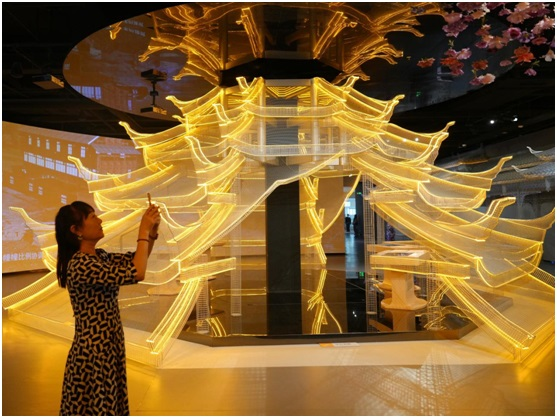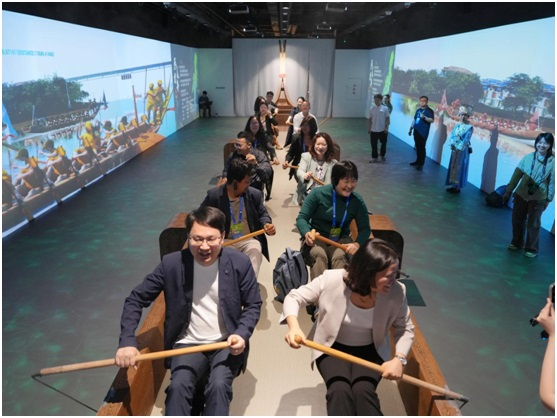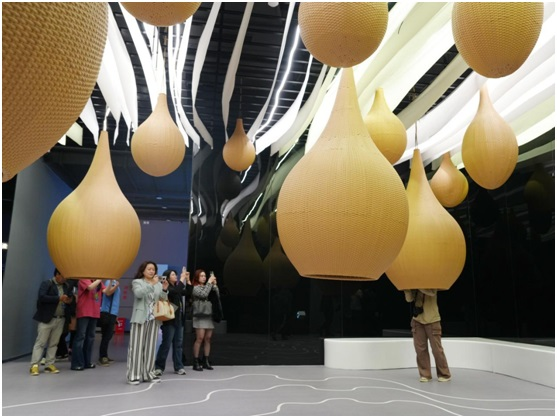KPL
In a vivid blend of tradition and technology, over 10 mainstream media outlets from seven ASEAN countries—including the Philippines, Cambodia, Laos, Malaysia, Myanmar, Thailand, and Indonesia—visited Wuxi Intangible Cultural Heritage Park in Huaihua, Hunan, experiencing firsthand how this inland Chinese city is reimagining its rich cultural heritage through innovation.

(KPL) In a vivid blend of tradition and technology, over 10 mainstream media outlets from seven ASEAN countries—including the Philippines, Cambodia, Laos, Malaysia, Myanmar, Thailand, and Indonesia—visited Wuxi Intangible Cultural Heritage Park in Huaihua, Hunan, experiencing firsthand how this inland Chinese city is reimagining its rich cultural heritage through innovation.
From stepping into a towering “digital bamboo hat” installation to weaving shimmering Dong brocade on electronic looms and marveling at Miao silver jewelry in an immersive LED “jungle,” the visiting journalists were treated to a multi-sensory journey where folk traditions meet cutting-edge technology.
Located in the Wuling Mountain Modern Commercial and Logistics City, part of the Huaihua International Land Port Economic Development Zone, the park covers over 26,000 square meters and is designed as a cultural tourism destination centered on intangible cultural heritage (ICH). Its facilities include a 5,500-square-meter digital experience zone, a 2,500-square-meter hands-on learning workshop, and an 18,000-square-meter open-air cultural square.
The highlight of the park is the digital experience area, which leverages augmented reality (AR), holographic projections, and naked-eye 3D to present 42 immersive exhibits. This interactive environment breaks the mold of static museum displays—offering visitors a chance to touch, explore, and feel traditional arts like never before.

Using motion capture and spatial modeling, traditional crafts such as Dong embroidery, clay pottery, and bamboo weaving have been transformed into interactive digital installations, allowing visitors to learn through play and experiment with time-honored techniques in new and engaging ways.
For families and youth, the study workshop offers hands-on training in traditional crafts, ensuring that these skills are not just observed, but actively passed down. Meanwhile, the Intangible Cultural Heritage Square brings Huaihua’s ethnic diversity to life through live festivals, markets, and performances, showcasing the region’s Miao, Dong, and Tujia cultural traditions.
A major attraction is the Yanwei Loong Boat installation, the only large-scale interactive exhibit of its kind in China. Featuring a swallow-tailed boat with distinctive “crocodile head, python body, and flying tail” design, it reflects Huaihua’s unique take on ancient dragon boat traditions.
In this version of the ritual, two or three strongmen act as a “living dragon head”, engaging in theatrical water battles that reenact ancient Panhu sacrificial ceremonies, a cultural anchor for Wuxi’s ethnic communities. The exhibit allows visitors to learn about the deep symbolic meaning of the ritual, while also engaging with a virtual boat race simulator.

The visit underscored Huaihua’s innovation in fusing ICH with tourism, technology, and commerce. The park includes areas for shopping, entertainment, and education, creating an integrated experience that extends the reach and relevance of intangible heritage in modern life.
“This is more than a museum,” said one visiting journalist from Indonesia. “It’s a living, breathing platform where culture, history, and future dreams coexist.”
By offering immersive, tech-driven experiences, the Wuxi Intangible Cultural Heritage Park not only preserves ancient crafts but also revitalizes them for new audiences, turning Huaihua into a national model for “intangible heritage-powered urban revitalization.”
The project reflects Huaihua’s broader strategy to “illuminate the city with intangible cultural heritage,” combining cultural pride with modern innovation. It serves as a vivid example of how local heritage can drive global curiosity, deepen ASEAN–China cultural ties, and bring centuries-old stories into the present.
KPL